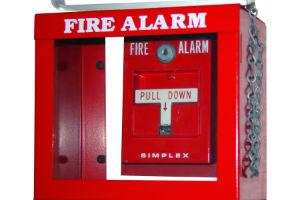 In the previous article, the basic concepts for design in distributed audio systems were proposed. Now it is intended to consolidate the audio design added with the necessary concepts to achieve an audio evacuation system.
In the previous article, the basic concepts for design in distributed audio systems were proposed. Now it is intended to consolidate the audio design added with the necessary concepts to achieve an audio evacuation system.
By Juan Tamayo*
It is intended to study the global concepts, since each standard is independent and requires a rigorous analysis. If the reader wants to know more about the standards, I invite him to study the NFPA-72 of the year 2013 of the United States or the EN-54 of the European Union.
It should be clarified that in South America so far there is no clear rule of audio evacuation in force, but it is expected that for a few years the issue will already be addressed.
For any audio evacuation standard, the following guidelines must be in the design:
- Redundancy
- Supervision
- Intelligibility
- Priority
If any of these points are missing, the audio system may not be considered as evacuation.
Redundancy
This concept can be applied to several stages of your audio system:
to. Speaker circuit. In the previous article we talked about the speakers, their fundamental feature is that they must have a line transformer to be able to connect several devices in the same circuit.
In audio evacuation projects an area must have at least two speaker circuits, with the elements interspersed, as far as possible A-B format, basically it is the same concept of lighting circuits in corridors, these speakers must be in different amplifiers, in case an amplifier fails or a circuit disconnects, the area is at least with a backup of auditory coverage.
Redundancy in the speaker circuit can result in a double cost in system wiring.
b. Amplifiers. Amplifiers, by their electronic nature, can fail either by an electric shock, a short circuit or any other damage. For this reason there must be a backup amplifier that automatically replaces the failed amplifier.
Experts recommend having for every eight channels of amplification, one backup channel. The backup amplifier channel must be superior in power to any channel you need to replace. There is talk of channels because there can be amplifiers of up to eight channels.
c. Audio Drivers. Due to the "intelligent" nature of audio systems, it is recommended to have a backup brain or controller, of course this element would greatly raise the cost of the audio system , but it is a good insurance at the time of failures.
Supervision
According to the evacuation rules, each element or group of elements of the audio system must be monitored, and additionally deliver a failure report in a maximum of two minutes (estimated time), the elements that are usually supervised are:
to. Speaker circuits. The system must be able to monitor the speaker circuit, several techniques are used among the most common is possessed:
Impedance check: the impedance of the system is monitored, if the number of speakers varies or the distance of the wiring the system must be trained again to make the evaluation with the new impedance.
Pilot tone check: This technique locates a card at the end of each speaker circuit, once the card detects the pilot whole it sends a signal to the amplifier or brain. This indication can be a dry contact signal or another signal that also travels over the speaker wiring. If you have branches in the circuit, there must be one card for each existing branch.
b. Microphones. All operational microphones for evacuations must be monitored. The condition of the capsule and the disconnection of the element are checked.
c. Message repeaters. Automatic messages are essential in the evacuation of a building, you should not wait for this evacuation to be carried out by a human being. For this reason, each message must be monitored. In factory-certified systems, this monitoring is done automatically.
d. Connections with other evacuation elements. The connection with the fire panel or PLC of the building must be monitored, because a disconnection with the actuator element of the audio evacuation will not generate such an event.
and. Amplifiers and controllers. A monitoring is carried out to the active elements of the system, generally the active systems have a fault pilot which turns on or off in case of failure state. The controllers have a relay to be supervised by another system.
Intelligibility
It is one of the fundamental elements in any audio design. Intelligibility basically defines how much can be understood from spoken messages, and their index is evaluated from 0 to 1, having as an acceptable level an evaluation higher than 0.6.
You can predict what the intelligibility of a system will be like using acoustic simulation tools and your evaluation method is usually with measurement tools certified under STI or STI-PA. STI: speech transmission index.
Priority
Basically this quality describes that there are more important signals than others in the subject of message playback, for example, ambient music has a lower priority than a message transmitted live from the control room.
It can be claimed that higher priority messages or signals can override lower priority messages in a specific area or zones, ensuring that people will hear the messages that will save the lives of themselves and their loved ones.
This is a summary of the most important qualities that an audio evacuation system must have. As the reader was able to observe, systems of this type must be digital, analog systems do not fit in the world of evacuation.
As a last tip, for the design and execution of projects of this type, always look for staff or an experienced company. If you have questions or want me to advise you on a project you can write to me [email protected]
*Juan Tamayo is an electronic engineer, specializing in audiovisual design.


























Leave your comment